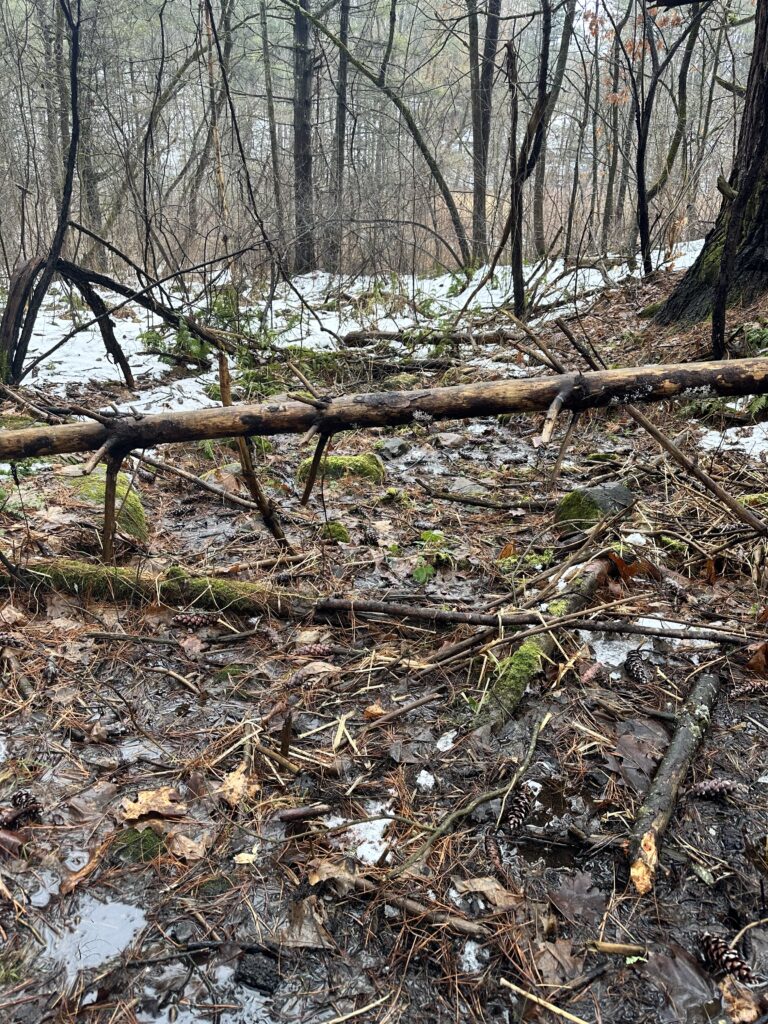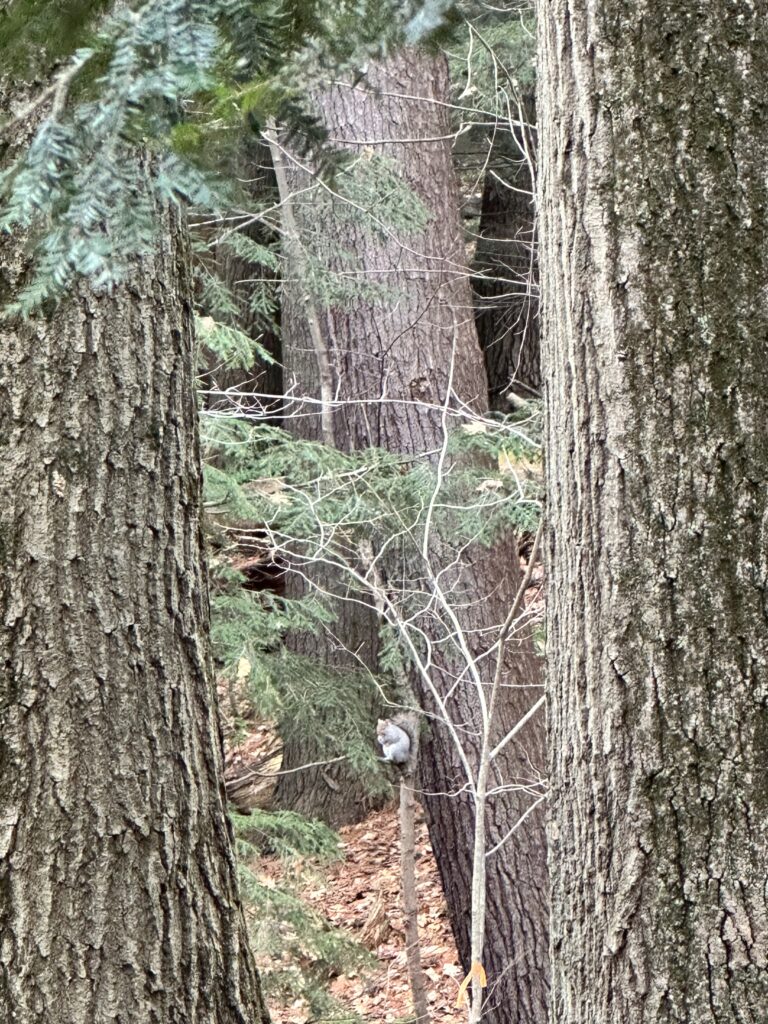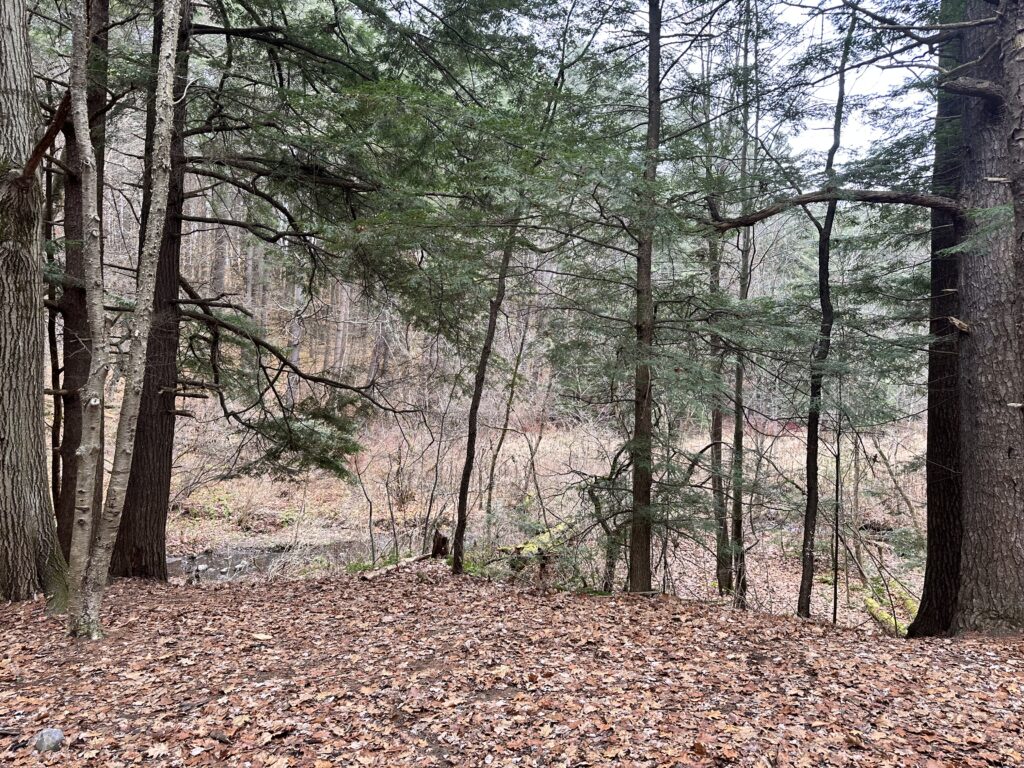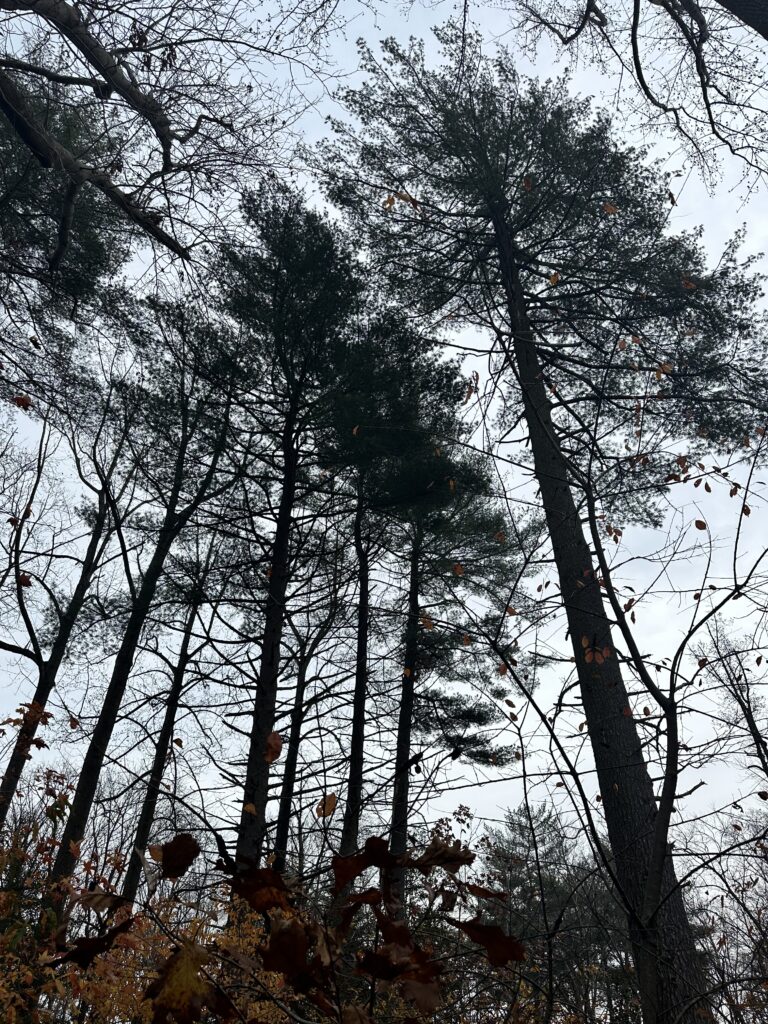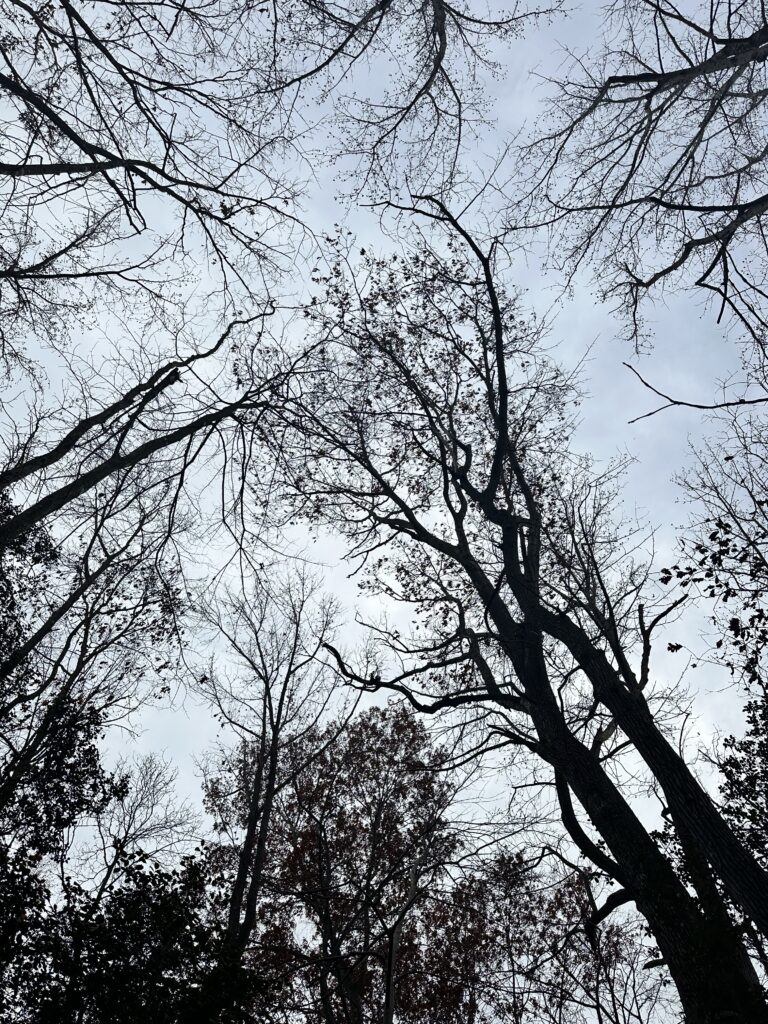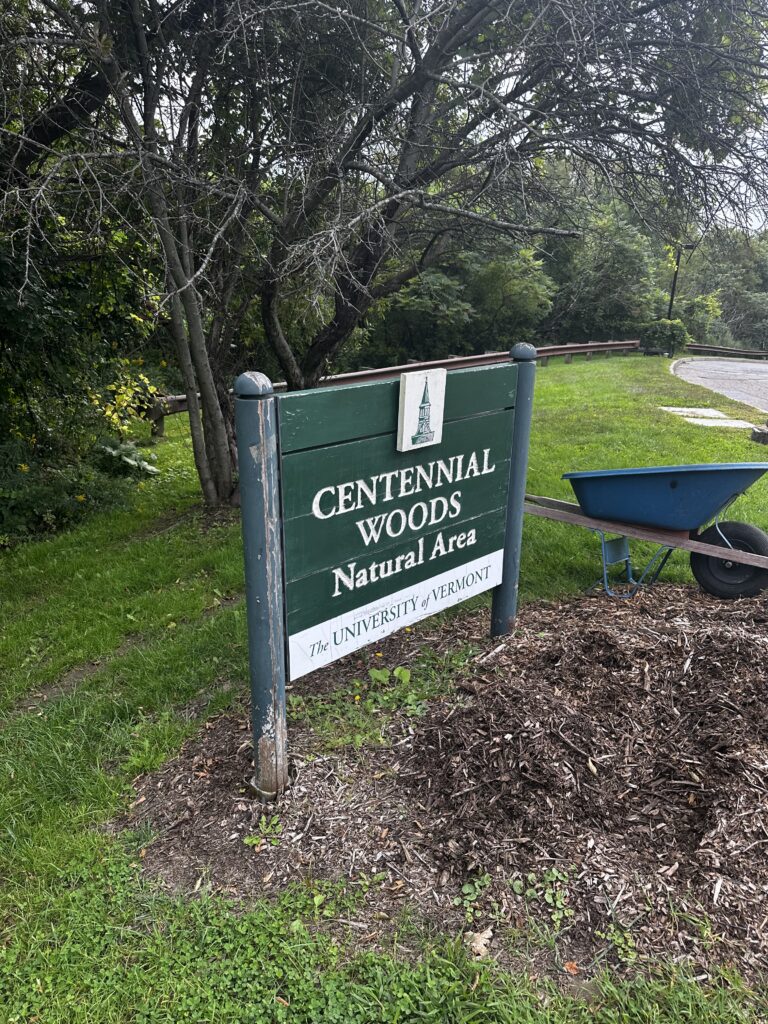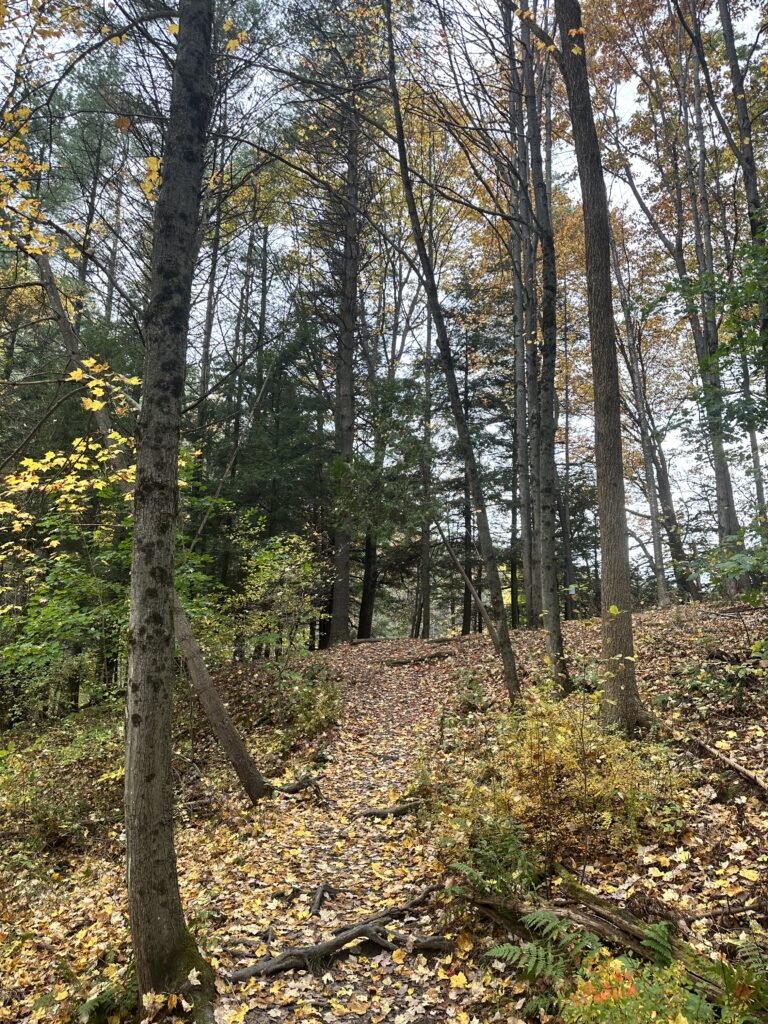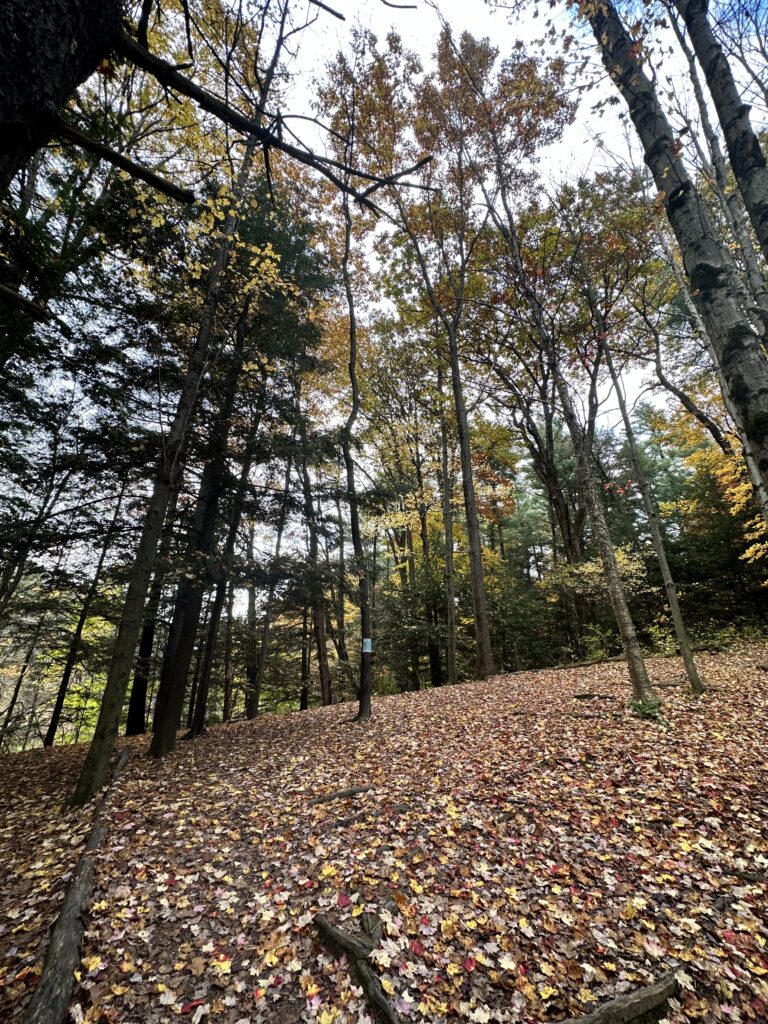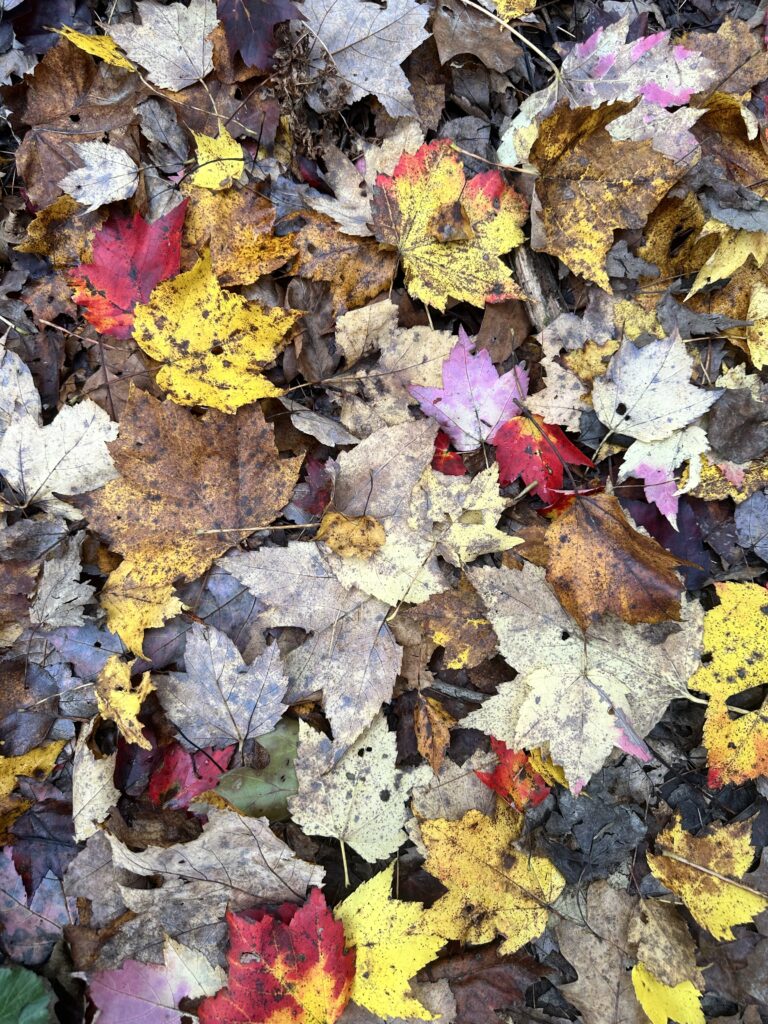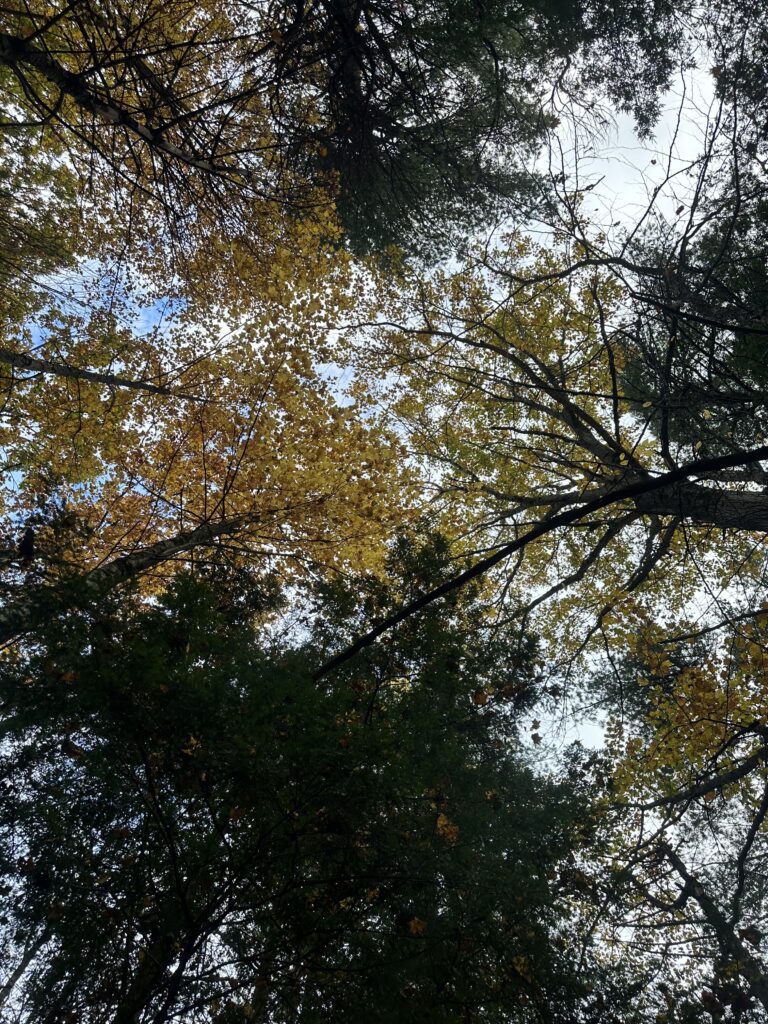Spring is in full swing. Buds are bursting with green life ready to absorb the sunshine. When I compare this final visit to my winter visit, it is hard to describe because it is a feeling. The forest feels alive with energy rushing through with every gentle breeze. During winter, there was nothing there just a graveyard of sleeping trees. Now, the sun has warmed the sleeping logs. Leaves bud from every trees. Birds sing as they fly by. The major landmark of my spot is circle of trails meeting in a circle area. The sun beams down warming the ground below but provides shade to the inner trail. There is stream that runs down the slope. If you sit quietly, you can hear the water string along.

Nature and culture have existed since the beginning of time. The Native American’s all around the world have bond with land and spiritual agreement. The trees know and the people know. The land of Centennial Woods is unseeded Abenaki land. It was taken from them by white men. Despite there being a titled ownership to this land. The trees and plants know the original keeper but will continue to offer welcoming to visitors.
As a traveler who has been to many places and has called many places home, you are never part of a place no matter how bad you want you. A traveler such as I, observes seeing from the outside in. We learn about the complexity of a place and sometimes fall in love, but there will always be a sense of missing that can never be truly found. I do not see myself as part of my spot. I am a visitor, observing and learning from the outside in, always moving on to the next, finding my sense of missing.


















